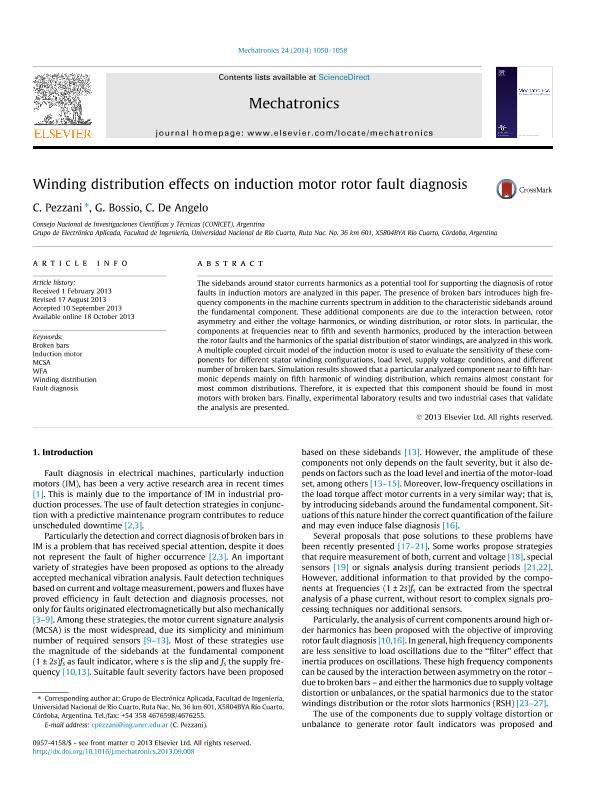Artículo
Winding distribution effects on induction motor rotor fault diagnosis
Fecha de publicación:
10/2013
Editorial:
Elsevier
Revista:
Mechatronics
ISSN:
0957-4158
Idioma:
Inglés
Tipo de recurso:
Artículo publicado
Clasificación temática:
Resumen
The sidebands around stator currents harmonics as a potential tool for supporting the diagnosis of rotor faults in induction motors are analyzed in this paper. The presence of broken bars introduces high frequency components in the machine currents spectrum in addition to the characteristic sidebands around the fundamental component. These additional components are due to the interaction between, rotor asymmetry and either the voltage harmonics, or winding distribution, or rotor slots. In particular, the components at frequencies near to fifth and seventh harmonics, produced by the interaction between the rotor faults and the harmonics of the spatial distribution of stator windings, are analyzed in this work. A multiple coupled circuit model of the induction motor is used to evaluate the sensitivity of these components for different stator winding configurations, load level, supply voltage conditions, and different number of broken bars. Simulation results showed that a particular analyzed component near to fifth harmonic depends mainly on fifth harmonic of winding distribution, which remains almost constant for most common distributions. Therefore, it is expected that this component should be found in most motors with broken bars. Finally, experimental laboratory results and two industrial cases that validate the analysis are presented.
Palabras clave:
Broken Bars
,
Induction Motor
,
Winding Distribution
,
Fault Diagnosis
Archivos asociados
Licencia
Identificadores
Colecciones
Articulos(CCT - CORDOBA)
Articulos de CTRO.CIENTIFICO TECNOL.CONICET - CORDOBA
Articulos de CTRO.CIENTIFICO TECNOL.CONICET - CORDOBA
Citación
Pezzani, Carlos Martín; Bossio, Guillermo Rubén; de Angelo, Cristian Hernan; Winding distribution effects on induction motor rotor fault diagnosis; Elsevier; Mechatronics; 24; 8; 10-2013; 1050-1058
Compartir
Altmétricas




